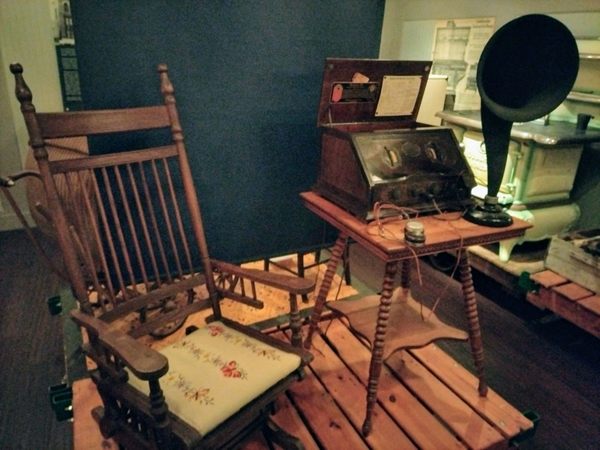A dark grey-painted building with a large sign labeled “SSE” visible from the street is located within a rather quiet neighborhood directly across from an athletic field. At first glance, it appears to be a warehouse or storage facility, but the many black-and-white vintage photographs that decorate the exterior give clues to something more.
This is the location of the Samuel Slater Experience, a museum dedicated to an individual most people probably have never heard of yet whose contributions would change not only American history but the entire world.
Samuel Slater was born on June 9, 1768, in Belper, England, as the fifth of eight children and the son of a farmer. At age 10, Slater entered an apprenticeship under Jedediah Strutt, who operated a cotton mill utilizing the new water frame pioneered by Richard Arkwright. At age 21, Slater wanted to be the owner of his mill, but given his background of not being a member of the gentry, this would be near impossible, and the highest he could hope for was possibly an overseer.
Slater knew the U.S. was eager to acquire textile technology, and the fledgling new republic would pay handsomely to help establish American industry. However, Slater also knew the British had passed laws forbidding the export of textile machinery and the emigration of textile workers to keep their technology secret and protect their economic monopoly. Following his ambitions and with the blueprint of the Arkwright water frame committed to memory, Slater disguised himself as a simple farmer and boarded a ship to the U.S., arriving in 1789.
Not long after, Slater contacted Rhode Island-based industrialist Moses Brown and offered his services. With Slater’s knowledge and expertise, they replicated the Arkwright water frame and established the first cotton mill and factory within the U.S. in Pawtucket in 1793. Together, they created the Rhode Island System of manufacturing, which became the predominant method for making textiles throughout New England and the Northeast.
When word reached England of Slater’s success and contributions, the British were furious and nicknamed him “Slater the Traitor” for leaving the country illegally and helping their former enemy and colonies. In 1812, Slater moved to Oxford and Dudley, Massachusetts, to acquire a larger workforce and a more plentiful water supply from nearby Lake Chaubunagungamaug, also known by its more famous name, Lake Chargoggagoggmanchauggagoggchaubunagungamaugg.
To adequately meet the needs of his mills and workers, Slater had land from Oxford and Dudley combined to create a new town named after statesman and personal friend Daniel Webster. For over a century, Slater’s mills brought people and prosperity to the community, with its population and development expanding exponentially, becoming one of the first boomtowns in the United States. By the start of the 20th century, Webster had its own trolley network, luxury hotel, silent film theatre, numerous shops, and businesses. The nearby lake also served as a very popular summer destination with steamboat cruises before the widespread availability of cars and the advent of the interstate highway system connecting to the ocean. The diverse community and sizeable immigrant population led to the town nicknamed “Little New York” during its heyday.
By the mid-20th century, with shifting demographics and a changing American society, the old Slater mills gradually closed, and Webster became a shadow of the bustling community it once was. However, Slater’s contributions and legacy can be seen and felt in the United States and globally. He is considered the “Father of the Industrial Revolution” within the United States and American industrial manufacturing would play a critical role throughout important historical events such as the Union victory and abolition of slavery during the Civil War, allied victories during both World Wars, and the rise of the U.S. as a global superpower.
The Samuel Slater Experience offers an in-depth and interactive look into Slater’s life and the history of Webster. Numerous artifacts are on display, recreations of various historical environments, exhibits visitors can interact with, educational films, vintage vehicles, and a replica of downtown Webster from the early 20th century, almost like a miniature trip back in time. Perhaps most importantly, the museum highlights immigrants’ prominent contributions to American history and society. Slater himself was an immigrant who left England illegally; many of the workers in his mills were migrants from all over the world who came to the United States seeking a better life. It helped create the foundation of the American Dream and the ethos of the United States being the “Land of Opportunity.”
The museum is worth visiting for those interested in early American industrial history who want a truly unique experience.

